lower back pain
dynamic and static stretching with Nomad Chiropractic
The Difference Between Dynamic and Static Stretches for Lower Back Pain Relief
Stretching can be a lifesaver when it comes to easing lower back pain. It's not just about flexibility – stretching improves mobility, reduces tension, and promotes circulation. But not all stretches are the same. Dynamic stretches involve movement, while static stretches require holding a position. How do these two methods compare, and which one is best for your lower back pain? Let’s explore.
What Are Dynamic Stretches?
Dynamic stretching involves controlled, active movements that take your muscles and joints through their full range of motion. Think of it as a gentle warm-up for your body, gradually preparing it for physical activity.
Dynamic stretches are great for boosting circulation, improving coordination, and activating key muscle groups. They work by increasing your heart rate and gently stretching the muscles in a way that mimics your workout or daily activities. This makes them perfect for use before exercise or even during small breaks to alleviate stiffness.
Lower Back Pain Sydney | Alleviate with Movement.
Chiropractor Sandy Ghobrial of Nomad Chiropractic in Mosman demonstrates a spinal stretch.
Examples of Effective Dynamic Stretches for Lower Back Pain
Cat-Cow Stretch
This yoga-inspired movement involves alternating between arching and rounding your back while on all fours. It encourages spinal mobility and reduces stiffness in the lower back.Spinal Rotations
Lie on your back with your knees bent and feet flat on the floor. Slowly drop your knees side-to-side in a controlled motion. This stretch loosens the lower back and improves mobility.Walking Lunges
Take a long step forward, bending the leading knee to a 90-degree angle. Keep your back straight. Walking lunges engage your hip flexors and lower back muscles, relieving tension and improving alignment.
Dynamic stretches are designed to energise your body and prepare your muscles for more demanding movements, including lifting weights or simply tackling a busy day.
The Role of Static Stretches in Pain Management
Unlike dynamic stretches, static stretches involve holding a position for a set duration—usually between 15 and 60 seconds. These stretches are less about movement and more about sustained elongation of the muscles. They are often performed after a workout or during a cool-down.
The primary benefits of static stretching include increased flexibility, muscle relaxation, and improved blood flow to the stretched area. For those experiencing lower back pain, static stretches can gently lengthen tight muscles and alleviate discomfort.
Effective Static Stretches for Lower Back Pain Relief
Seated Forward Fold
Sit with your legs extended straight. Reach toward your toes, keeping your back straight. This stretches the lower back and hamstrings simultaneously.Knee-to-Chest Stretch
Lie on your back and pull one knee toward your chest while keeping the other leg extended. Hold for up to 30 seconds, then switch sides. This targets the lower back muscles directly.Hamstring Stretch
Place one leg on an elevated surface such as a stair or low bench. Keep your back straight as you lean forward slightly. Tight hamstrings often contribute to lower back pain, making this stretch invaluable.
When to Use Static Stretches
Static stretches are best done after physical activity or as part of a cooldown routine. They're also helpful during moments of rest if your back feels tight or achy. Their slow, steady nature helps the muscles relax and stay elongated for better long-term flexibility.
Choosing Between Dynamic and Static Stretches
The choice between dynamic and static stretches depends on several factors: the timing of your activity, your fitness level, and the cause of your back pain. Here’s a quick guide to help you decide:
Before Exercise: Choose dynamic stretches to warm up your muscles and prevent injury.
Post-Workout or During Recovery: Opt for static stretches to release tension and enhance flexibility.
For Ongoing Pain Relief: A mix of both may provide the best results.
Integrating Both Stretching Types for Lower Back Pain Relief
For the best outcomes, consider incorporating both styles into your routine. Start your day or workout session with dynamic stretches to get your body moving. Then, wind down with static stretches to enjoy a sense of relaxation and recovery.
For example:
Begin with cat-cow stretches and spinal rotations to loosen up your back.
End your session with a knee-to-chest stretch or seated forward fold for a deeper release.
This balanced approach helps reduce stiffness, improve flexibility, and manage back pain effectively.
Conclusion
Dynamic and static stretches each offer unique benefits for lower back pain relief. Dynamic stretches get your blood pumping and increase mobility, making them ideal before exercise. Static stretches, on the other hand, are perfect for relaxing and lengthening the muscles after activity.
By combining these techniques, you can create a stretching routine tailored to your needs. Whether you’re dealing with chronic back pain or looking to prevent discomfort, listening to your body and timing your stretches appropriately is key. Keep moving and stretching – your lower back will thank you!
Disclaimer : these exercises are for general educational purposes only and don’t pertain to your individual pain or circumstances unless we have specifically prescribed them for you personally. If you are suffering from lower back pain please consult your health provider for assistance.

